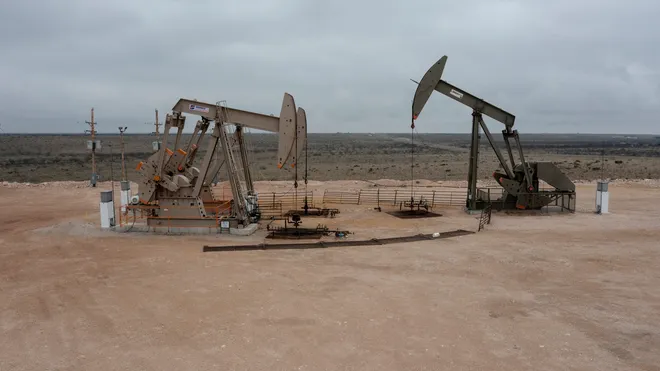Last month, the Environmental Protection Agency unveiled new emission standards targeting coal-fired power plants that aim to cut their carbon pollution, a major contributor to global warming and climate change, by 90%.
This federal initiative marks a significant step toward combating rising temperatures and shifting weather patterns caused by the buildup of heat-trapping gases in the atmosphere, said experts including Catherine Hausman, an environmental and energy economist who teaches at the University of Michigan.
“Energy analysts have been waiting for a ruling like this for a long time, so it is landmark,” Hausman said.
“We just haven’t had regulations at this scale that impact carbon pollution.”
These regulations, the EPA projects, will bring about the closure of most, if not all, of the country’s coal plants by 2045, according to an impact analysis report accompanying the announcement.
Find nearby coal plants and emissions data
Enter an address to locate the nearest operating coal plants and view their carbon dioxide (CO2), sulfur dioxide (SO2), and nitrogen oxides (NOx) output for 2023. The size of the red circles represents the amount of carbon emissions. Some emissions data may be blank or incomplete for plants considered “operating” but partially out of service and not expected to return to full service within the next calendar year. Don’t see a map? Click here. https://www.usatodaynetworkservice.com/tangstatic/html/usat/sf-q1a2z330306dc3.min.html
Unlike previous efforts to curb carbon emissions, which often relied on tax incentives or state-level regulations, this rule sets a standard threshold for coal-fired plants that emit large amounts of carbon dioxide, a potent greenhouse gas.
The country’s electric grid has transformed over the past two decades. Once the backbone of energy production, coal-generated electricity dwindled, giving way to natural gas as the top source of electricity generation. Meanwhile, renewable alternatives, though progressing at a more leisurely pace, have seen significant strides.
At the start of the century, coal supplied about half of the country’s electricity. Today, that share has plummeted below 17%. Nearly 400 plants shuttered in the past two decades, including a combined 60 retirements in Ohio and Pennsylvania, the states with the most closures.

As plant closures grew, emissions fell. A USA TODAY analysis of federal data showed that coal-fired electricity generation and smokestack carbon emissions decreased by more than half in the past 10 years.
Individual plants varied widely in how much they reduced carbon emissions. The Indian River facility in Delaware had the highest reduction at 98%, but more than a dozen plants, including Ebensburg Power Company in Pennsylvania, reported increased emissions.
Plants mainly cut carbon emissions by reducing the amount of time they operate. Emerging technologies exist to trap and store carbon from power plants, but they are not widely used yet.
More:America’s largest coal source may be losing federal business. But not without a fight
Of about 220 operational coal plants remaining today, dozens have already announced plans to retire in the next decade, with the U.S. Energy Information Administration’s planned retirement data showing about 50 plants that expect to close by 2032. The EPA expects more retirements to be announced.
“The economics of the power sector have shifted dramatically,” Nick Conger, an EPA spokesperson, said in an emailed statement, “and technological innovations have increasingly made low- and zero-emitting sources more competitive with fossil fuel-derived power generating sources.” https://e.infogram.com/017d477e-9f10-45fe-87c9-39960616c682?src=embed#async_embed
Coal generation on its last leg
Towering coal-fired power plants have seen their dominance wane as the number of coal plants more than halved in the past decade, facing competition from other affordable energy sources, including natural gas, wind and solar.
“The primary cause of that is because natural gas prices have been so much lower than they were before the fracking revolution,” Hausman said, referring to the rapid increase in U.S. natural gas production starting around 2008. Gas-fired power plants also cost less to operate by the hour, she said.

Wind and solar are now more cost-effective to produce than many other electricity sources, including coal, which is more expensive than both natural gas and renewables, according to a previous USA TODAY investigation.
The cost of generating coal is more than twice that of wind and nearly double that of solar, based on an analysis by the financial advisory firm Lazard, factoring in expenses for building, operating, fueling and maintaining a power plant, even without government subsidies.
Read more:US counties are blocking the future of renewable energy: These maps, graphics show how
Natural gas accounted for 43% of U.S. electricity generation in 2023, while renewables made up more than 21%. The Energy Information Administration projects that renewable generation will supply 44% of U.S. electricity by 2050, followed by natural gas at 34%. Coal-generated electricity will be 10% or less.
Natural gas plants are easier to operate flexibly, meaning that they can ramp up and down when needed to meet changes in demand, said Sally Benson, a co-director of the Stanford Center for Carbon Storage.
Coal plants that have continued to operate often run less than they used to, Benson said.
According to the new EPA rules, coal plants staying open beyond 2039 must cut or capture 90% of their emissions by 2032, while those retiring by 2039 face a less strict standard. Plants set to close by 2032 are exempt from the new standards.
The average operational lifespan of a coal power plant is 45 years, according to the EIA. USA TODAY’s analysis showed that most of the coal plants currently operating went online in the 1970s and 1980s, suggesting that they might be on their last legs.
Can carbon capture technology save coal?
Plants that expect to continue operating beyond 2039 will have to reduce their emissions using technologies such as carbon capture and storage, a method that traps, transports and stores CO2 underground where it is securely stored and unable to enter the atmosphere.
However, the feasibility and affordability of implementing this technology nationwide are subjects of considerable debate and speculation.
So far, only one U.S. power plant, the Petra Nova facility in Thompsons, Texas, has installed the technology at full commercial scale.
Despite federal tax credits and incentives for plants adopting carbon capture, critics argue it remains an emerging technology that isn’t affordable beyond smaller pilot projects.
One notable example is the Kemper Project in Mississippi, intended to be a groundbreaking “clean coal” plant outfitted with carbon capture technology. However, after facing delays and costs exceeding $7.5 billion, the initiative was killed in 2017. State regulators directed the plant to switch to burning natural gas, abandoning the original plans for carbon capture.
Carbon capture and storage “is not yet ready for full-scale, economy-wide deployment, nor is there sufficient time to permit, finance, and build the CCS infrastructure needed for compliance by 2032,” said Dan Brouillette, president of Edison Electric Institute, an association of investor-owned electric companies, in a written statement.

Supporters of carbon capture technology acknowledge those challenges but assert that it represents a necessary step towards reducing emissions.
“The EPA is requiring something that we know is physically feasible and technologically possible,” Hausman said.
“If plants decide that, ultimately, it’s too expensive for them, that’s telling us that those plants should close, and we should rely on other cleaner plants to provide that electricity instead.”
Contention over the EPA ruling
As demand for electricity rises with the increasing use of electric vehicles, heat pumps, air conditioning and the expansion of AI data centers, the need for reliable, clean energy is growing. However, the transition from fossil fuels to clean energy isn’t without contention, as climate activists and coal advocates clash over the best approach.
When the EPA opened the floor for public comments on the proposed rules a year ago, more than 8,000 responses were submitted with some praising it and others voicing stern opposition.
On one hand, proponents say the EPA rule will improve air quality and public health without causing power disruptions. On the other hand, critics decry it, warning of strained electrical grids, rising utility costs and the impact on coal-dependent communities.
Republican attorneys general in 27 states have sued the EPA over the new rules.
Outgoing U.S. Sen. Joe Manchin, a Democrat from West Virginia and a well-known advocate of the coal industry, expressed concerns that these rulings would lead to premature closure of coal plants. He likened these latest regulations to “death by a thousand cuts” to America’s fossil fuel industry, especially coal.

Wyoming and West Virginia are the top producers of coal in the U.S.
The U.S. Chamber of Commerce, a business lobbyist group, doesn’t think the country will be able to entirely replace coal-generated electricity with renewables, pointing out factors such as federal permitting delays, supply chain issues and construction challenges.
“The idea that America can quadruple its current renewables capability in the next 16 years is, at best, a stretch,” according to the Chamber’s Global Energy Institute.
The EPA rebutted those concerns, assuring that the agency will provide safeguards and flexible measures to ensure the nation’s power grid isn’t disrupted in the case of such issues.
In a presentation on the final rule, the agency mentioned that it engaged with environmental justice groups and communities impacted by fossil fuel-fired power plants before making its final determination.
It concluded that the climate and health benefits of this rule “significantly outweigh” the compliance costs, according to the presentation.
“I think of these rules as a guardrail,” Hausman, the University of Michigan economist, said. “This kind of rule says no matter where we are in 10 years, no matter what’s happening with those different fuel sources, we know that we’re doing our best to decarbonize the sector.”
Author:: Bagombeka Job
Credit:: USA Today!











































